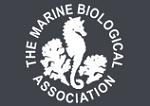APHOTOMARINE
An educational resource dedicated mainly to the photography
and diversity of marine life that can be found in coastal waters
and intertidal areas of Great Britain and Ireland by David Fenwick.

Antithamnionella ternifolia
- growing on rock 1
Non-native fine red seaweed
Antithamnionella ternifolia
- growing on rock 2
Non-native fine red seaweed
Antithamnionella ternifolia
- epiphytic on Fucus 1
Non-native fine red seaweed
Antithamnionella ternifolia
- epiphytic on Fucus 2
Non-native fine red seaweed
Antithamnionella ternifolia
- epizoic on Styela clava 1
Non-native fine red seaweed
Antithamnionella ternifolia
- on marina pontoon 1
Non-native fine red seaweed
Antithamnionella ternifolia
- on marina pontoon 2
Non-native fine red seaweed
Antithamnionella ternifolia
- on 0.1mm division rule 1
Non-native fine red seaweed
Antithamnionella ternifolia
- microscope image 1
Non-native fine red seaweed
Antithamnionella ternifolia
- microscope image 2
Non-native fine red seaweed
Antithamnionella ternifolia
- microscope image 3
This small, but vibrantly coloured species of algae was found growing epithitically on Fucus serratus, found on the lowershore near the boat yard slipway, South Pier, Newlyn Harbour, Newlyn, Cornwall. 28.12.14. It was also found growing on rocks and stones in the harbour on an extra low water spring tide. 25.01.15.
For more images of this non-native species see-
When the sea and beach turned red - a bloom of the non-native fine red seaweed Antithamnionella ternifolia at Wherrytown, Penzance, 06.09.17.
Epiphytic - occurring non-parasitically on plant or other algae.
Epizoic - occurring non-parasitically on an animal.
APHOTOMARINE supports open source data recording and sharing for the benefit of wildlife, recorders, research, science and education. The project recommends the following websites and works with the following bodies and organisations.
The Marine Biological Association or MBA, based in Plymouth, is one of the world’s longest-running societies dedicated to promoting research into our oceans and the life they support. Since 1884 the MBA has been providing a unified, clear, independent voice on behalf of the marine biological community.It has a growing membership in over 40 countries.
The National Biodiversity Network or NBN is a charity that supports open source data sharing and recording supporting conservation, science and education. "Why do recorders need open source?". Simply because it supports the core values of wildlife recording and the free use of records and data over a very wide network that includes partners like the Natural History Museum.
The taxonomy used here is based on that of the following database, which is also used by the MBA, NHM and the NBN.
The World Register of Marine Species or WoRMS.
AlgaeBase is a database of information on algae that includes terrestrial, marine and freshwater organisms.

